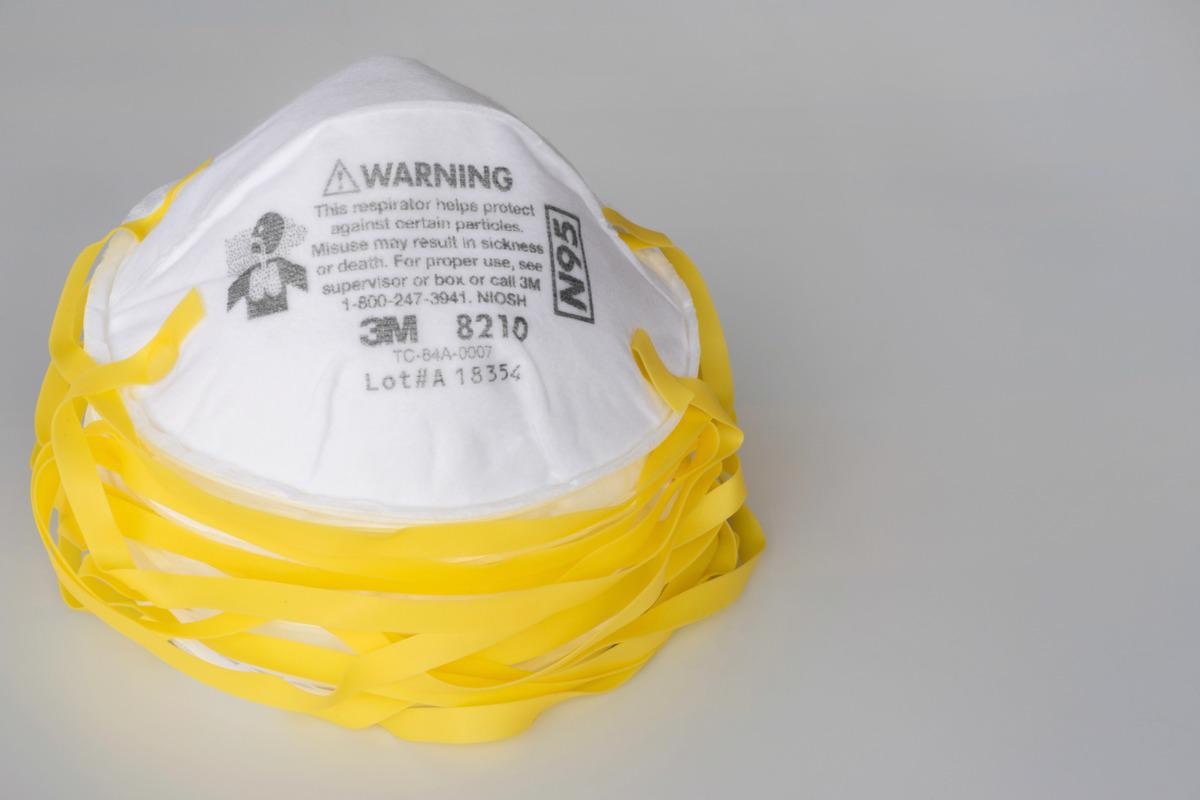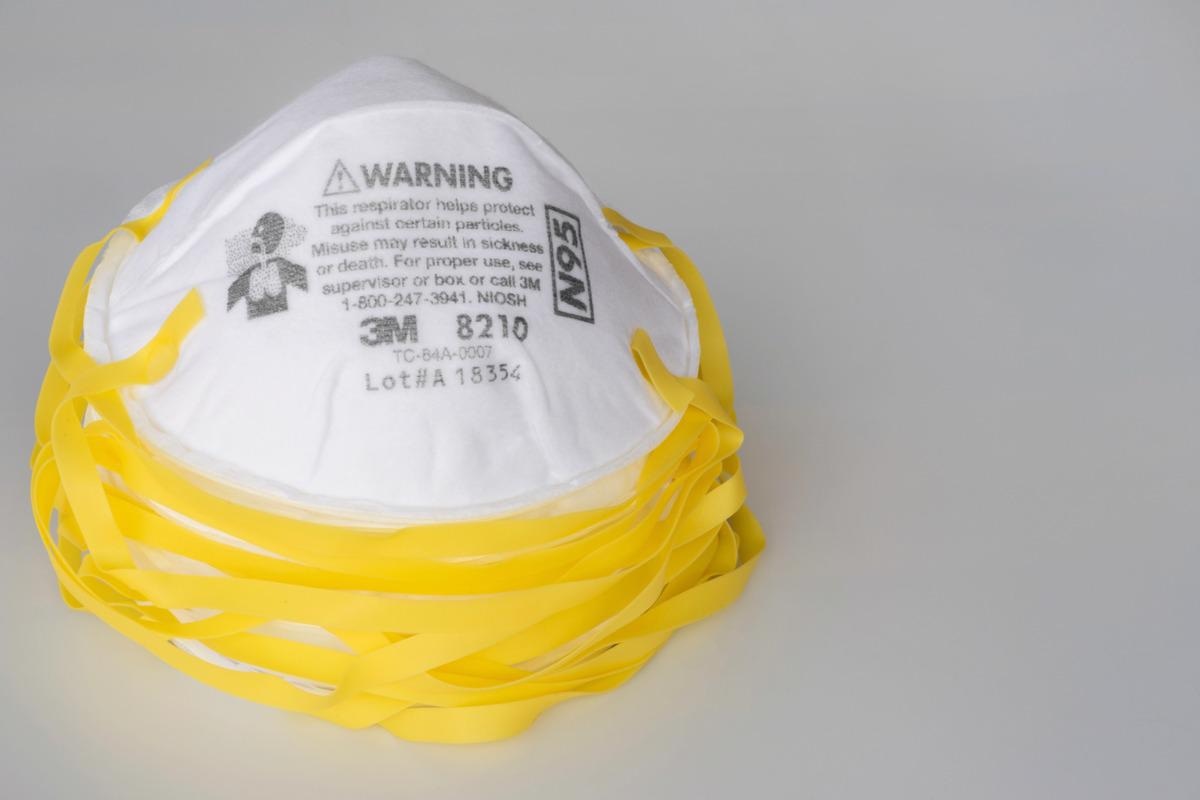In a recent research article published in Viruses, researchers developed a prototype of a miniaturized electrostatic precipitator (mEP) that can be used as an apparatus to effectively remove severe acute respiratory syndrome coronavirus 2 (SARS-CoV-2) containing bioaerosols, and tested the comparable effectiveness to a filter-based respirator, nonoil-95 percent collection (N95).

Background
SARS-CoV-2 is a highly transmissible virus and a causative agent for coronavirus disease 2019 (2019), responsible for the current pandemic. To date, it has infected over 494 million people worldwide, with over 6.1 million mortalities.
It is known that SARS-CoV-2 spreads easily by passing through the respiratory droplets from infectious persons to immunocompromised hosts. This shedding of the virus has been widely prevented by utilizing facial coverings. Facial coverings include filter-based respirators, and surgical or cloth masks.
The surgical masks collect particles via the microburst high-velocity exhalation of the wearer's impaction mask surface but do not provide protection from particles ((>0.3 μm non-oily aerosols) and bioaerosols. Filter-based masks, however, provide protection from ambient bioaerosols and collects particles on a thermospun/cellulose filter substrate.
Filter-based masks, though efficient in blocking bioaerosols, lead to a significant pressure drop between ambient air and the breathing zone upon inspiration, thus making it difficult for continuous use and may compromise respiratory systems.
About the study
The developed prototype of mEP was designed so as to fit the face of the wearer by strapping it to the back of the head. The design minimized the corona discharge through an operational point.
The capacity of mEP to remove particles was tested using aerosolized salt solution at a high inlet flow (85 L per minute [LPM]). Briefly, a saline solution-loaded aerosol particle generator, connected to a test chamber, was passed through a honeycomb to let laminar flow into the chamber. This chamber contained the device and the samplers.
An airflow was created using a regenerative blower that would pass through the mEP device. Particle counts and ozone concentration were evaluated. The power supply was provided and measured too.
The airborne viral removal efficiency was evaluated. For this, the SARS-CoV-2 aerosol was generated in a 16 L polycarbonate chamber, consisting of dilution, exhaust tubing, and a sampling orifice connected to an automated system.
Respirators were evaluated using SARS-CoV-2 inoculum strain 2019-nCoV/USA-WA1/2020 (BEI# NR-52281) prepared using VeroE6 cells. For aerosol generation, the replication-competent virus was quantified by median tissue culture infectious dose (TCID50). Briefly, VeroE6 cells were inoculated with the virus and cytopathic effects (CPE) were evaluated. CPE relative to control was regarded as positive and was used to calculate TCID50 by the Reed and Muench method.
The inoculums were directly expressed into the collision nebulizer, activated, and analyzed on a continuous basis. The stability of the ambient concentration of the particles was dependent on the overall flow and dilution of air and expected to approach a steady-state in approximately one minute.
SARS-CoV-2 aerosols were collected using all-glass impingers for performing the biological viability of viral aerosols. The collected viral RNA was quantified using RT-qPCR which was targeted toward the nucleocapsid of the virus. The temperature was maintained at 20.4 ± 3.6 °C, whereas the relative humidity was 57.6 ± 7.2%.
Particle counting was done using an aerodynamic particle sizer (APS) having an internal exhaust flow of 5 LPM and residual exhaust flow at 2 LPM. Time-of-flight analysis was used to measure particles that ranged from 0.5–20 um. The APS spectrometer used a double laser to reduce false background. Particle resolution was characterized by one scan per second.
Study findings
The particle collection of ~95% was obtained with a power of ~0.35 mW, whereas the particle rejection improved to 97.5%, indicating stable particle collection even after continuous wear.
The mEP reduced the ozone levels greatly which were below U.S. Occupational Safety and Health Administration (OSHA) limits (less than 0.1 parts per million (ppm)) and the U.S. Food and Drug Administration (FDA) limits (less than <0.05 ppm). The particle counts were confirmed by using a HEPA filter as a control.
When the capacity of both mEP and N95 to remove particles was compared, no significant difference was found. The mEP performance was equivalent to the N95 (96.9%), providing an average of 96.5% removal at measured airflow velocities. However, a significant difference was found between ambient particle concentration and the mEP, N95, or HEPA filter.
Viral bioaerosol evaluation studies showed that mEP removed most of the viral RNAs from the airstream at a distally positioned aerosol sampler. However, when the mEP was ‘off’, they were unable to remove a significant level of viral RNA. The percentage removal was mostly similar between the mEP (99.79%), N95 (99.94%), and the HEPA filter (99.99%).
Conclusion
Overall, researchers evaluated the efficiency of prototype mEP to remove SARS-CoV-2 bioaerosols particles and compared it to the N95 respirators and HEPA filters. The results showed that mEP was successful in removing these particles equivalent to the other respirators without decreasing the pressure for the user.
However, the researchers identified a few limitations concerning the use of biosafety level 3 laboratory, and high-flow rates were discouraged. Importantly, the study did not consider particle removal upon expiration for both the respirators. The viability of the collected virus particles was not evaluated.
Many such limitations thus warrant further detailed studies.
- Redmann, R. K., Beddingfield, B. J., Spencer, S., et al. (2022) A Miniaturized Electrostatic Precipitator Respirator Effectively Removes Ambient SARS-CoV-2 Bioaerosols. Viruses. doi: https://doi.org/10.3390/v14040765 https://www.mdpi.com/1999-4915/14/4/765/htm
Posted in: Medical Science News | Disease/Infection News | Healthcare News
Tags: Breathing, Coronavirus, Coronavirus Disease COVID-19, Food, Laboratory, Ozone, Pandemic, Research, Respiratory, RNA, SARS, SARS-CoV-2, Severe Acute Respiratory, Severe Acute Respiratory Syndrome, Spectrometer, Syndrome, Tissue Culture, Virus

Written by
Prajakta Tambe
Prajakta Tambe, Ph.D. worked at Queen’s University Belfast on a project that focused on studying ‘Role of Tregs in Acute Respiratory Distress Syndrome'. Prajakta completed a Ph.D. in August 2020 at Agharkar Research Institute, University of Pune, India. Her work aimed to develop dendrimer-based nanoparticles for the targeted delivery of MCL-1 gene-specific siRNA to bring about apoptosis in breast and prostate cancer cells and in vivo breast cancer xenograft models.
Source: Read Full Article
